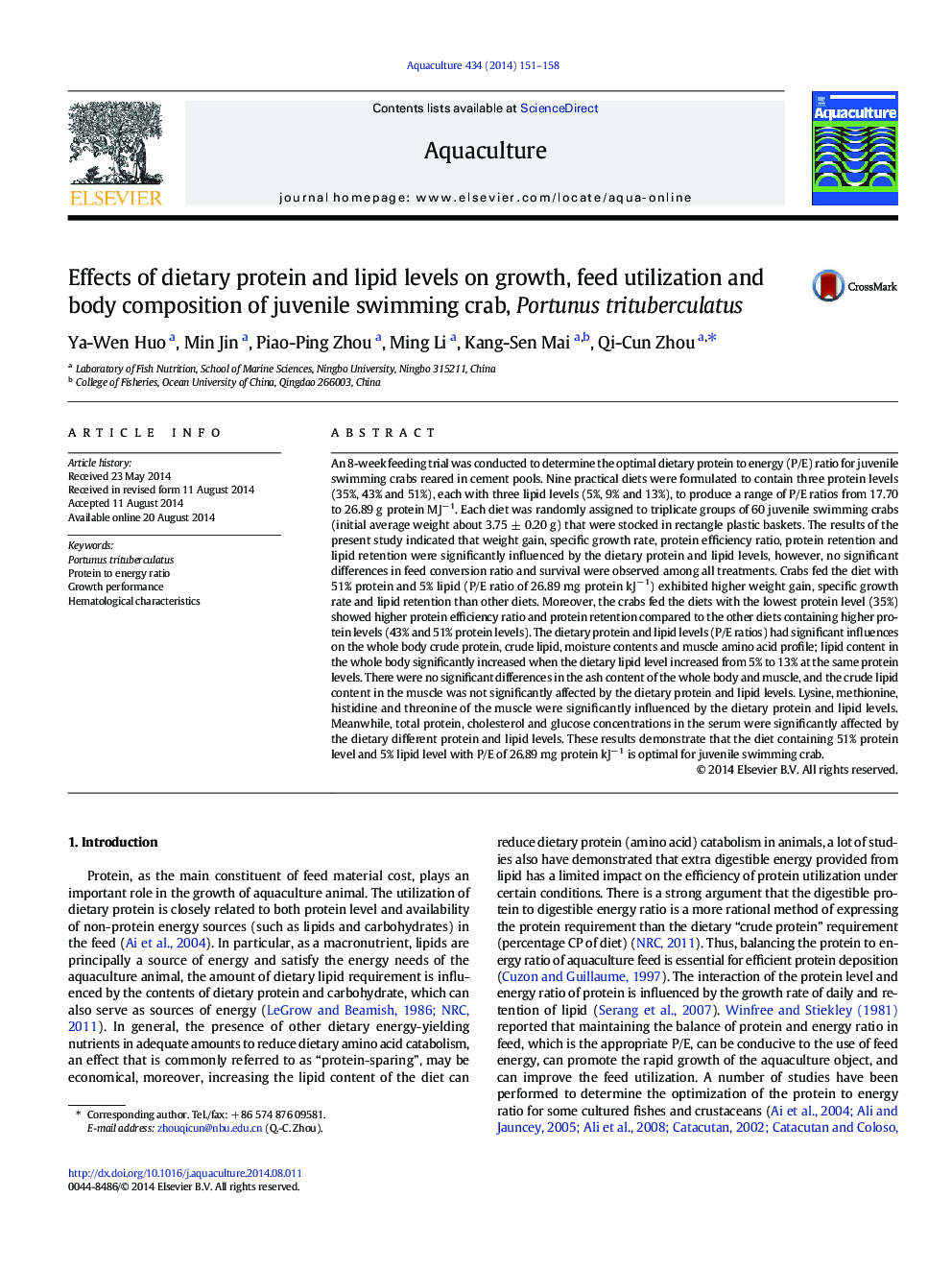| کد مقاله | کد نشریه | سال انتشار | مقاله انگلیسی | نسخه تمام متن |
|---|---|---|---|---|
| 2421687 | 1552853 | 2014 | 8 صفحه PDF | دانلود رایگان |

• Growth performance was significantly influenced by dietary protein to energy ratios.
• Dietary protein to energy ratio significantly affected EAA concentrations.
• Swimming crab fed the P51 and L5 diet grew well.
An 8-week feeding trial was conducted to determine the optimal dietary protein to energy (P/E) ratio for juvenile swimming crabs reared in cement pools. Nine practical diets were formulated to contain three protein levels (35%, 43% and 51%), each with three lipid levels (5%, 9% and 13%), to produce a range of P/E ratios from 17.70 to 26.89 g protein MJ− 1. Each diet was randomly assigned to triplicate groups of 60 juvenile swimming crabs (initial average weight about 3.75 ± 0.20 g) that were stocked in rectangle plastic baskets. The results of the present study indicated that weight gain, specific growth rate, protein efficiency ratio, protein retention and lipid retention were significantly influenced by the dietary protein and lipid levels, however, no significant differences in feed conversion ratio and survival were observed among all treatments. Crabs fed the diet with 51% protein and 5% lipid (P/E ratio of 26.89 mg protein kJ− 1) exhibited higher weight gain, specific growth rate and lipid retention than other diets. Moreover, the crabs fed the diets with the lowest protein level (35%) showed higher protein efficiency ratio and protein retention compared to the other diets containing higher protein levels (43% and 51% protein levels). The dietary protein and lipid levels (P/E ratios) had significant influences on the whole body crude protein, crude lipid, moisture contents and muscle amino acid profile; lipid content in the whole body significantly increased when the dietary lipid level increased from 5% to 13% at the same protein levels. There were no significant differences in the ash content of the whole body and muscle, and the crude lipid content in the muscle was not significantly affected by the dietary protein and lipid levels. Lysine, methionine, histidine and threonine of the muscle were significantly influenced by the dietary protein and lipid levels. Meanwhile, total protein, cholesterol and glucose concentrations in the serum were significantly affected by the dietary different protein and lipid levels. These results demonstrate that the diet containing 51% protein level and 5% lipid level with P/E of 26.89 mg protein kJ− 1 is optimal for juvenile swimming crab.
Journal: Aquaculture - Volume 434, 20 October 2014, Pages 151–158